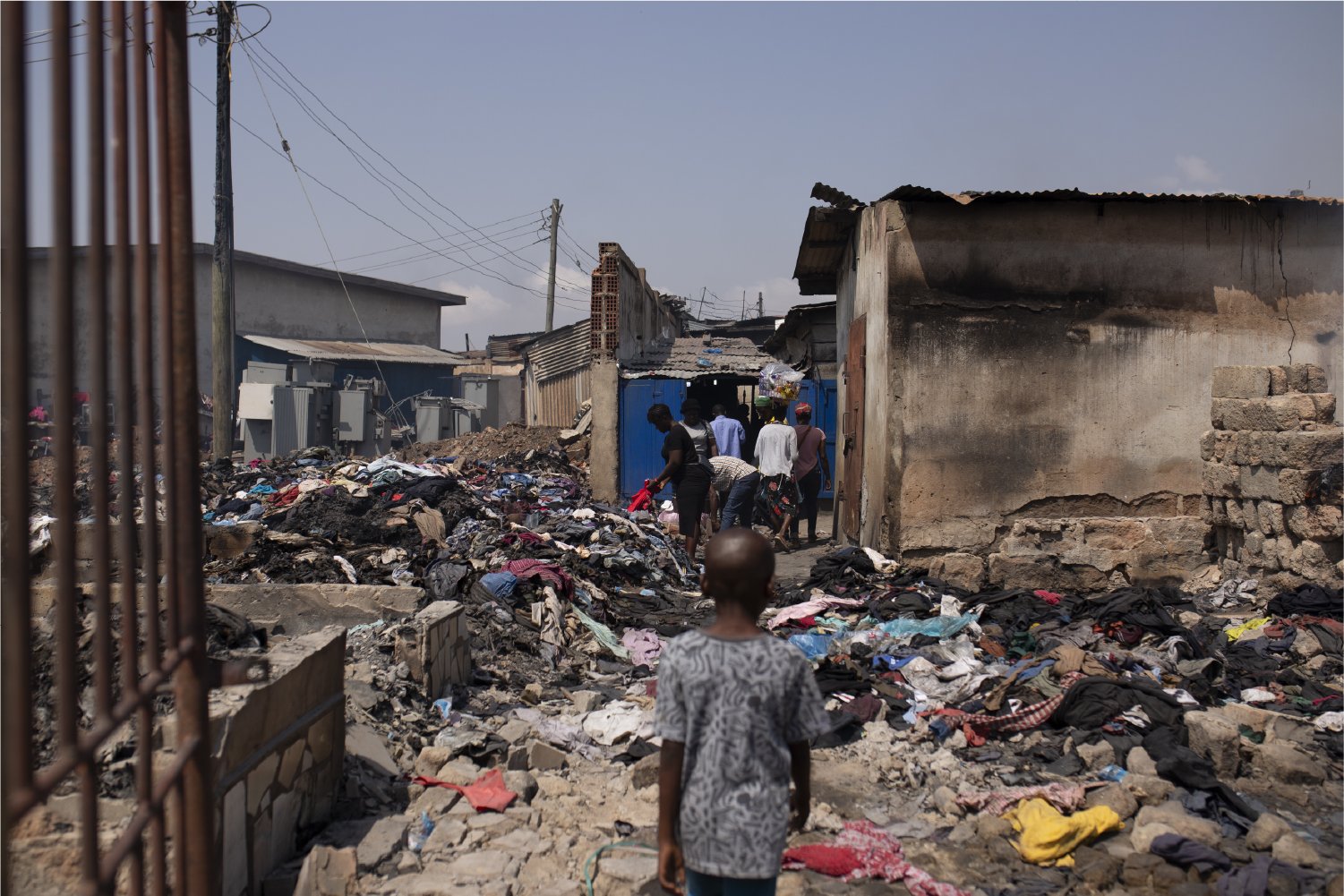End of Life

The Problem
The waste generated from End of Life is derived from mixed garments for waste or recycling. Many are destroyed or sold to the Global South by the Global North for profit.
~67.70
MILLION
tonnes of textile waste generated globally per year. Equivalent volume of 38 x Boeing Everett Factory, USA (World’s largest building).
$52.65
MILLION
waste value. Equivalent to increasing the basic average yearly pay for all 65,000 garment workers in Ethiopia by 159.6%.
One Solution
The Or Foundation is a USA and Ghana-based not-for-profit operating at the intersection of environmental justice, education and fashion development. In solidarity with members of the Kantamanto Secondhand Clothing Market ecosystem, The Or is working to catalyze a Justice-led Circular Textiles Economy in Accra.
About the Solution
We are working to catalyze a holistic framework to address fashion’s waste crisis as it manifests in Accra, Ghana, where our research has uncovered that in one market alone 15 million items from the Global North circulate each week, with 40% leaving the market as waste. We are solving this through a cohesive and multifaceted approach building on the ecosystem of the Secondhand Economy:
Capturing and processing textiles for recycling in our lab
Fostering Regenerative Agriculture for food security and sustainable virgin inputs in circular product streams
Incubating inclusive, circular product research & design to kickstart new industries
Promoting advocacy and awareness to shape policy and consumer behaviour
Strengthening the landscape locally and internationally for investment to scale and multiply solutions for impact that are equitably driven by innovators in West Africa
As an organisation, we bring these different components together as one circular solution.
Triple Bottom Line
Sustainability Impact Measurements
Environmental (planet): By year three at least 100 tons of carbon will be sequestered annually through regenerative farming practices, and the equivalent of 7000ce tons through recycling textile waste.
At least 44% reduction in greenhouse gas emissions for clothing worn in Ghana by strengthening the secondhand clothing ecosystem when compared to replacing the secondhand clothing ecosystem with new, imported clothes, which is otherwise the most likely scenario. Additionally, at least 100 tons of carbon sequestered annually through regenerative farming practices by year three and the equivalent of 7,000 tons of Carbon emissions avoided through recycling textile waste by year three. Additionally we would see cleaner beaches and waterways, strengthening ecological regeneration.
Social (people): In the Kantamanto market in Accra, we liberate thousands of young women and girls working as kayayei (head carriers) from conditions of modern day slavery.
A goal of our work is sustainable production and consumption that breaks from colonial legacies of resource exploitation, both natural and human. Achieving this within the context of the Kantamanto Market Secondhand Clothing Market in Accra, Ghana means accompanying thousands of people out of debt, liberating thousands of young women and girls working as kayayei, or head carriers, from conditions of modern day slavery, and regenerating a healthy and nurturing ecosystem for generations young and old to enjoy.
Economical (prosperity): Through our work the goal is to foster dignified, living wage jobs and businesses for 30,000 people grounded in a regenerative framework and equitable solutions.
Through this work the goal is to foster dignified, living wage jobs and businesses for 30,000 people and disrupt a multibillion dollar exploitative global industry with a regenerative framework, grounded in shared opportunity and equitable solutions, leapfrogging the linear economy with circular solutions.
WORLD LEADERS,
ACT NOW
Planet: Legislation of Extended Producer Responsibility to address the end of life waste, and investment and support in closed-loop systems and national infrastructures to simplify textile recycling for the consumer.
People: Regulation to stop governments and brands passing on the responsibility and damaging impacts of their own textile waste to ‘receiving’ communities in the Global South, and investment in these communities to implement waste processing solutions.
CASE STUDY: RATTI. Read on to discover how Ratti reduces waste related to End of Life by investing in Second Life projects. COMING SOON

